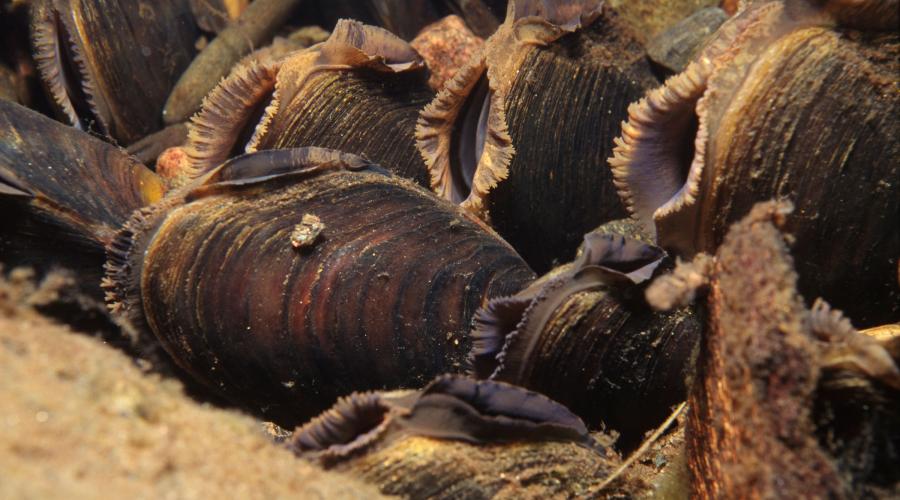
Multimillion nature fund ‘takes to the water’
26 May 2021
New projects that protect and grow Scotland’s marine life, boosting the vulnerable wild oyster population by tens of thousands; and supporting fragile freshwater pearl mussels are among the latest recipients in an ambitious expansion ‘into the water’ by the Scottish Government's Biodiversity Challenge Fund.
On land there are new, ambitious and wide ranging plans for biodiversity-rich nature parks and green corridors in Glasgow, Edinburgh, St Andrews and Orkney.
The 12 successful projects across Scotland will share the additional £2million committed in this round of the Biodiversity Challenge Fund, taking the overall Fund investment to £6.4 million. The projects will take practical steps to improve natural habitats, safeguard plant and animal species and improve biodiversity.
Successful projects include Kyle of Sutherland Fisheries Trust’s Restoring Pearl Mussel Habitat, which will help restore river habitats and create diversity to protect the vulnerable population within a tributary of Loch Shin,; and Heriot-Watt University’s Oyster Ark project, which will identify and conduct detailed assessments of remaining wild Scottish oyster habitats, and where appropriate, move a portion as brood-stock to Scotland’s biosecure hatchery to spawn future generations, with tens of thousands of oysters to be returned to bolster the remnant wild populations. The native oyster Ostrea edulis is a Priority Marine Feature (PMF) for conservation.
Edinburgh and Lothians Greenspace Trust’s project will create a new biodiverse park next to Wisp in Midlothian, including native meadows, planting trees, making bee bank habitats and planters for butterflies. The project aims to create green corridors to parks and the surrounding countryside. Glasgow’s Green Urban Connectors project will unite the designated Local Nature Reserve and Sites of Importance for Nature Conservation in the south east of the city, with green river corridors, parks, amenity managed open green spaces and woodlands to form ‘active travel’ corridors for wildlife.
Orkney will see the transformation of an existing open grassed area with low biodiversity value, into a vibrant biodiversity-rich and multi-functional public park with trees, shrubs, meadow and meandering burn. While a University of St Andrews’ project will create a linked network of urban meadows managed for biodiversity, running through St Andrews’ main wildlife corridors of the Swillken Burn and Kinness Burn and along the southern banks of the Eden Estuary to Guardbridge.
The Biodiversity Challenge Fund specifically encourages applicants with projects creating transformational change to increase the biodiversity and environmental value of land and sea, maintain a focus on habitats and species, while simultaneously supporting green skills, training and jobs where possible. In doing so, successful projects from this third round of funding will contribute to the green recovery as we emerge from Covid-19 and work towards a nature rich future.
Minister for Environment, Biodiversity and Land Reform, Màiri McAllan, said
“The Scottish Government is committed to tackling the twin crises of climate change and biodiversity loss.
“Protecting Scotland’s biodiversity is not just essential for the environment, it is central to our green recovery from the pandemic. Initiatives like these can boost local resilience and provide great opportunities for people to gain vital skills.
“With the UN’s COP15 biodiversity conference approaching, and COP26 coming to Glasgow, we want to demonstrate Scotland’s global leadership on addressing biodiversity loss. We have already made a commitment to protect at least 30% of Scotland’s land for nature by 2030. By investing £2 million in these projects today, we can help turn those ambitions into a reality.”
NatureScot Chief Executive, Francesca Osowska, said:
“During lockdowns people around the world have valued the direct physical and wellbeing benefits of nature. More than ever before, people are starting to understand fully and support powerful arguments to put nature at the heart of our emergence from this crisis.
As we emerge from the COVID pandemic, investment in a ‘green recovery’ is understood to be the most cost effective way of making our communities and our nature sustainable and more resilient, while driving inclusive economic development.
“This year new global targets to improve nature will be agreed at a Conference of the Parties in Kunming, China (COP15). Alongside COP26 on climate change in Glasgow, Scotland has a huge opportunity to address the many challenges and pressures that nature is facing. Nature is at the heart of what we do, and we will continue to deliver the transformational change needed to bring a nature-rich, sustainable and more economically secure future for Scotland.”
The Biodiversity Challenge Fund adds to the many millions of pounds of Scottish Government funding delivered through the Scottish Rural Development Programme and other sources to support biodiversity and help to deliver Scotland’s Biodiversity Strategy.



